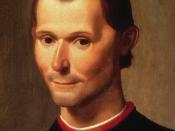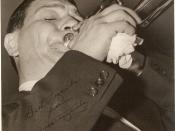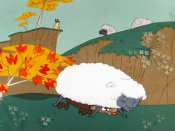The Truth Behind the Leader
Machiavelli once wrote in a letter, "My view is that it is desirable to be both loved and feared; but it is difficult to achieve both and, if one of them has to be lacking, it is much safer to be feared than loved." A prime model of application can be seen in William Golding's novel Lord of the Flies. In the story a group of British schoolboys become marooned on an uninhabited island due to a nuclear war. On the island the attempted democracy by the boys gradually begins to fail into anarchy, disarray and even death, a situation created by Jack. In the novel, Golding uses Jack, the often feared antagonist, as a symbol for cruel absolutism. To create this symbol, Golding uses instances of power hunger, images of savagery, and Jack's use of manipulation.
In the novel, Jack Merridew is introduced as the prominent choir leader but his prominent and respectable status soon turns to an obsession for power.
After the plane crash which maroons the boys on the island, the boys are called together for the first time by the sound of the conch, a symbol for civilization and order. As they boys draw together from various parts of the island, other characters begin to introduce themselves. Dressed in black cloaks, Jack and the choirboys come marching in ordered columns and at the shouted command of Jack they halted in their tracks waiting for his next command. And right away Jack attempts to assume power over the boys by asking where "the man with the trumpet" (Pg.16) which seemingly shows that he was attempting to find an ordered figure to guide them. Although, as soon as he is informed by Ralph, the primary representative of order, civilization, and productive leadership,



Excellent
very well written. Keep up the good work. many essays I have read on this poece are trite repetative and or boring your manages to be none of those. Bravo!
1 out of 1 people found this comment useful.